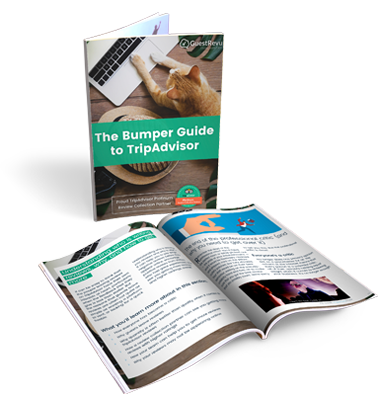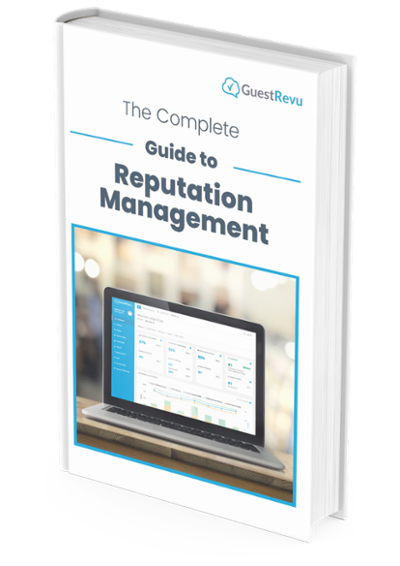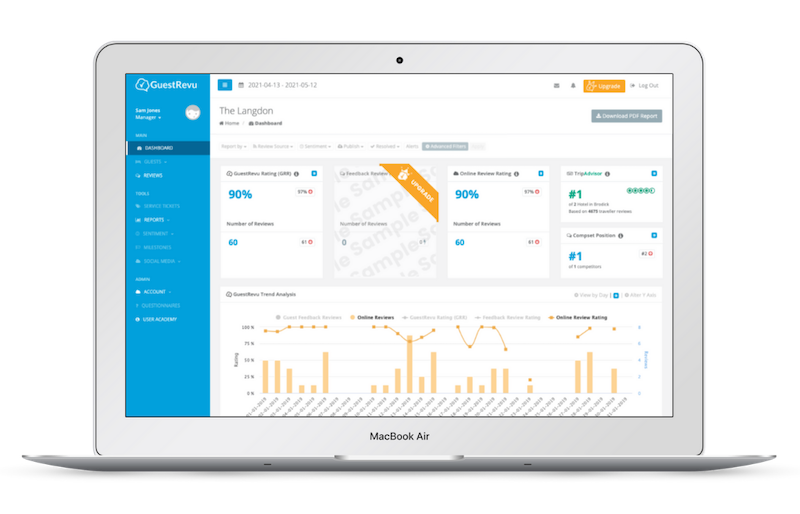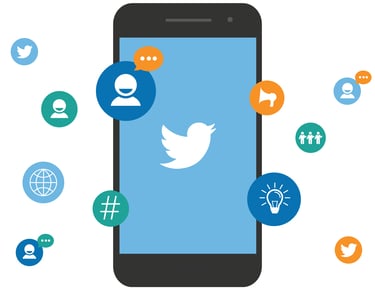 By now it’s no secret that social media is an invaluable sidekick when it comes to building a brand and engaging with customers. And there are almost no platforms better than the little blue bird.
By now it’s no secret that social media is an invaluable sidekick when it comes to building a brand and engaging with customers. And there are almost no platforms better than the little blue bird.
About 50% of global Twitter users follow brands (that’s over 150 million users), making it an ideal platform for savvy marketers to build a meaningful relationship with their audience. If used correctly, Twitter can also help direct greater volumes of traffic to your website, foster customer loyalty, generate direct bookings, and much more.
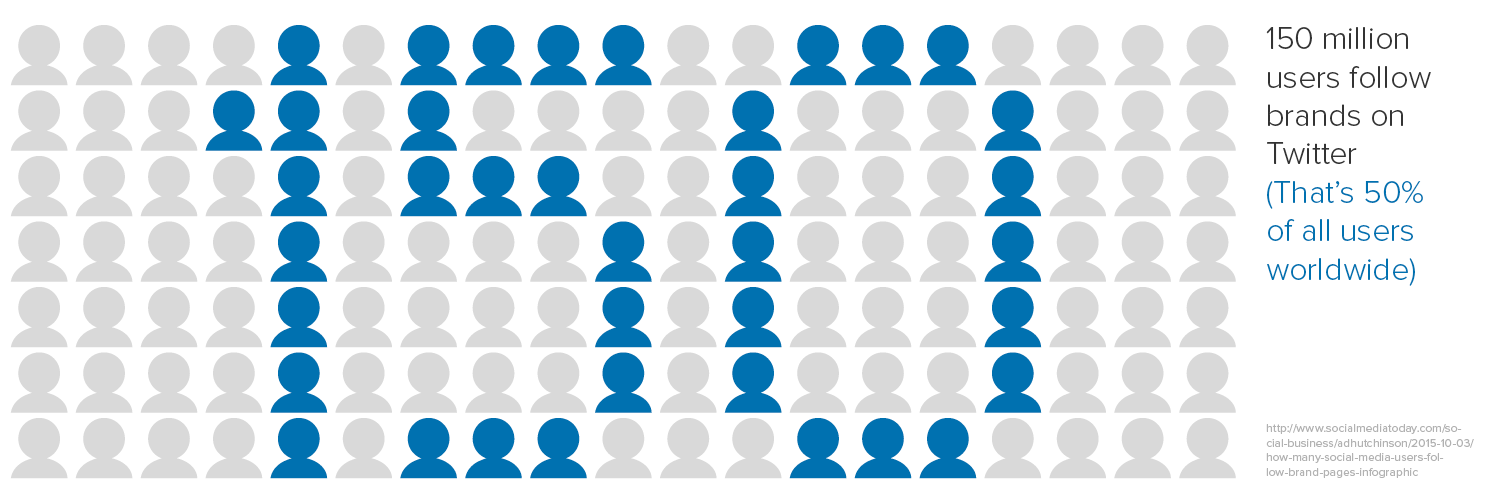
We take a look at some of the top ways hoteliers can use Twitter to boost their brand and generate new business.
1. Focus on customer relations
While Twitter has its place for content sharing, it’s often less effective than other social platforms like Facebook and Instagram. Twitter is fast-paced and conversational, and for many users it’s a direct link to a brand, be it to praise, criticise or enquire – you need to be listening, responding and connecting, not just trying to steer people to your website.
Over 300-million people use Twitter on a monthly basis, using hashtags and mentions to converse in real-time. Thus, it’s important to use Twitter for customer relations, not just marketing, as it allows you to listen to and engage meaningfully with existing and potential guests. Here are a few ways to make that happen:
- Engage with (legitimate) accounts who @ mention your hotel
The hotel industry has a notoriously bad track record when it comes to responding to guests via Twitter (with less than 20% of @ mentions receiving replies, according to a 2014 study). Go the extra mile and reduce your response time. Even if it’s a tweet laden with conflict, do your best to apologise and reassure the guest of your high standards. This transparency goes a long way towards strengthening your credibility. Show your guests you’re on their side. - Develop a proactive Twitter strategy
This is where the beauty of Twitter’s mechanics comes into play. By listening to the chatter around travel issues or complaints about competitors in your city, you can react accordingly and capitalise. Maybe someone was counting on a last-minute hotel cancellation that didn’t happen, and is now stranded. Here you come to save the day... Follow some of the points below to set up your own proactive strategy: - Set up a custom Twitter feed that allows you to monitor keywords (‘tired/frustrated’ + ‘hotel’ + ‘name of your city’ etc.) and track mentions of your competitors. Respond directly if you see an opportunity to do so.
- Do the same thing for people who might be stranded after a heavily delayed or cancelled flight. Use keywords like ‘flight’ + ‘cancelled’ + ‘stranded’ + ‘name of your city’.
- Also look out for first-time travellers to your city (‘first’ + ‘time’ + ‘travelling’ + ‘name of your city’). By giving them a warm greeting and some helpful advice on what attractions to see, you’ll put your brand at the foreground of their accommodation plans, even if it’s in the future.
Hilton and Starwood are great examples of hotels using Twitter to connect with guests. Both respond quickly (Starwood's average response time is a remarkable 33 minutes), and Hilton's 'Hilton Suggests' account provides travel tips and advice to visitors to cities all over the world.
@Rocknmystockins Lots to do on Hawaii's #BigIsland! Star-gazing at Mauna Kea, see lava flow on helicopter/boat tours, local breweries ^HO
— Hilton Suggests (@HiltonSuggests) September 14, 2016
2. Monitor your brand
Use a tool like HootSuite to set up monitoring for keywords relating to your hotel, allowing you to keep an eye on all good and bad things being said about it on Twitter and engage accordingly.
You can also use Twitter’s advanced search functionality to search for your hotel’s name, its Twitter handle, your city etc., and use the tick boxes at the bottom of the page to help filter your search. This keeps you in the know, allowing you to swiftly respond accordingly.
3. Decide what “Twitter voice” to use
A lot of people worry about how they should engage with their online following. What language should I use? When am I being too friendly? For the most part, just think about how you would speak with a guest in your hotel. Your approach would be a friendly, relaxed and conversational one, putting them at ease while attending to their needs. Take that across to Twitter.
Keep it simple – avoid personal jokes or sarcastic remarks, but if a sense of humour is called for in a particular situation, and you think it would go down well with your following, then go for it. Remember, this is also about the language of your brand.
4. Use Twitter Chats to discover leads and new followers
As we mentioned above, it’s a bad idea to only tweet about your hotel offerings or push for a sale. It’s one way to quickly bore or frustrate your audience. Get involved with Twitter chats (like Travel Talk on Twitter – #TTOT), which gives you the opportunity to meaningfully engage around a topic that might be relevant to your business – especially in the travel industry. By using popular hashtags like these, you have direct access to thousands (if not millions) of people.

For example, if there’s a discussion going on about some of the best places to travel in summer, why not post a great photo of an attraction in your area, accompanied by an interesting fact? You’re not selling yourself directly, you’re selling the area. And potential travellers will remember you as the hotel to thank for inspiring them (hopefully with a booking).
5. Plot a calendar to leverage off real time events
Like the point mentioned above, it’s not always about pushing a product. By developing a calendar of popular events that are relevant to your audience or speak to your brand, you can again get involved in a diverse range of conversations that can quickly net you more followers and new business.
A few well-timed tweets could not only increase your following, but generate new business for your hotel as well
For example, let’s say there’s a major beer festival happening next weekend, and your hotel is nearby. Maybe you have an opinion on a certain beer. Use the event hashtag and get involved in the conversation. It will show you have more to talk about than your hotel, and someone might just book the night with you instead of driving home.
Make sure you have some content ideas generated already, or think of ways to respond to potential tweets people put out. A few well-timed tweets could not only increase your following, but generate new business for your hotel as well.
6. Schedule tweets
Good Twitter accounts tweet regularly and consistently. But because life happens, we can’t be on Twitter all day, every day. This is where a host of different scheduling tools come in handy, allowing you to schedule content for the week during a quiet morning, without having to worry about posting throughout each day.
HootSuite and Buffer are some good options to check out, but there are dozens of platforms out there for you to experiment with. Just remember to check your @ mentions each day to make sure you’re on top of any queries you may receive.
7. Use the power of social proof
The concept of social proof is a simple one, but many brands fail to truly capture its potential. Imagine you’re searching for a hotel online, and are presented with two good options. Both look similar in price and comfort, but one has included positive feedback from clients via its social media channels. Which one would you feel inclined to choose?
This third-party validation is extremely useful in generating new business. We’re more inclined to follow through with a particular action if we know others have had a good time doing the same thing. Human nature 101. Share the positive feedback you receive, and thank people directly. Remember that you can also embed tweets in your blogs.
In a nutshell
With practice and consistency, you’ll master some of the more advanced Twitter techniques and watch your online following (and hopefully your profits) swell.
Remember to use Twitter as a customer relations tool, not just a marketing platform – its ability to allow you to connect with your guests in real-time is what sets Twitter apart. Share and acknowledge the good feedback you receive to bolster social proof, and use Twitter tools to monitor what people are saying about your brand.
Remember to use Twitter as a customer relations tool, not just a marketing platform
Get involved with Twitter chats, plot a calendar of events relevant to your audience and join the conversations. Be friendly and conversational in your approach, and be mindful of your brand identity.
Of course, there are far more Twitter marketing strategies out there. Have you been using any that have shown great results? Let us know in the comments below.

